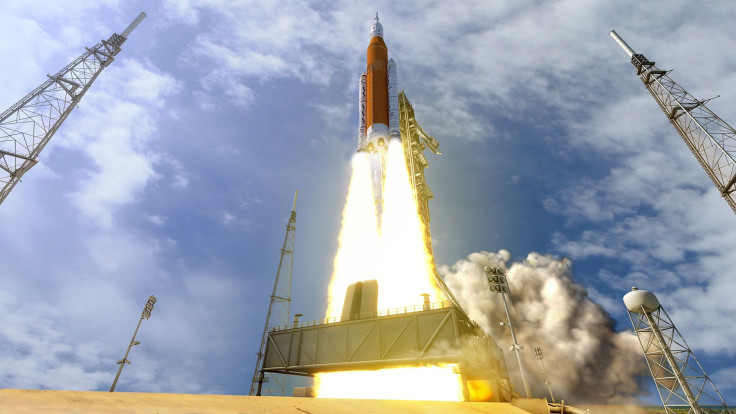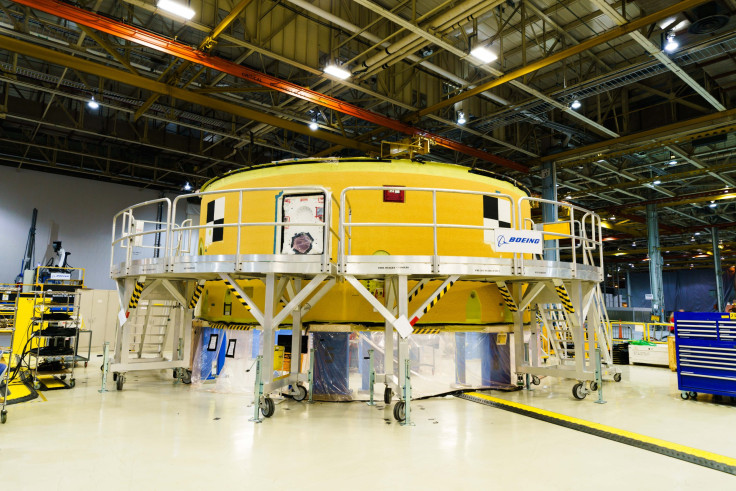Space Launch System: NASA Completes Major Component Of Its Next Big Rocket

On July 24, NASA completed a critical component of Space Launch System — the massive rocket it plans to use for flying humans on deep space missions to Moon, Mars, and beyond.
The agency completed what scientists call as the forward skirt of its next big rocket. This part, as described in a press statement, has been designed to go into the vehicle’s core stage, which would stand 212-foot tall and house four RS-25 rocket engines, propellant tanks, and other avionics.
Though the skirt is a relatively small part of the core-stage, it performs the major job of connecting the entire stage with the upper half of the rocket. Also, it incorporates most of the on-flight computers integrated into the vehicle. NASA sees the assembly and testing of this piece of hardware as a major step toward the completion of the vehicle and prepping it for its first flight — the Exploration Mission 1.
“Completion of the core stage forward skirt is a major step in NASA's progress to the launch pad," Deborah Bagdigian, lead manager for the forward skirt at the agency's Marshall Space Flight Center, said in a statement. "We're putting into practice the steps and processes needed to assemble the largest rocket stage ever built. With the forward skirt, we are improving and refining how we'll conduct final assembly of the rest of the rocket."

After prepping the forward skirt, the team at NASA tested its avionics units to verify the hardware’s functionality. As part of this effort, the computer systems integrated with the skirt came to life and started running background checks in search for errors. The whole process, which was pretty similar to a car running internal diagnostic tests, didn’t return any error codes, proving that the skirt was built correctly and ready to go into the vehicle.
"It was amazing to see the computers come to life for the first time" Lisa Espy, lead test engineer for SLS core stage avionics, said in the statement. "These are the computers that will control the rocket as it soars off the pad for Exploration Mission-1."
However, it is worth noting that forward skirt avionics are not the only computer systems that will go into the vehicle. Other parts of the core stage will also host computer systems and devices that will act as the brain of the vehicle, helping with deep-space navigation and communication with ground stations and Orion — the spacecraft sitting on top.
While the forward skirt is now ready to go into the core stage, the team plans to build on this development and install advanced avionics in other core stage parts including the intertank and the engine section. The massive stage, as NASA described, will have two main sections — forward and aft join.
The forward join will host skirt, liquid oxygen tank, and intertank, while the aft section will carry the engines and the liquid hydrogen tank. Once all these parts are ready and tested, the two sections will be integrated and the complete core stage will be tested by the end of this year.
This will eventually lead to the integration of the core stage with upper part of the rocket and two solid boosters for Exploration Mission-1, an uncrewed deep-space flight set to happen sometime around December 2019.
© Copyright IBTimes 2024. All rights reserved.





















